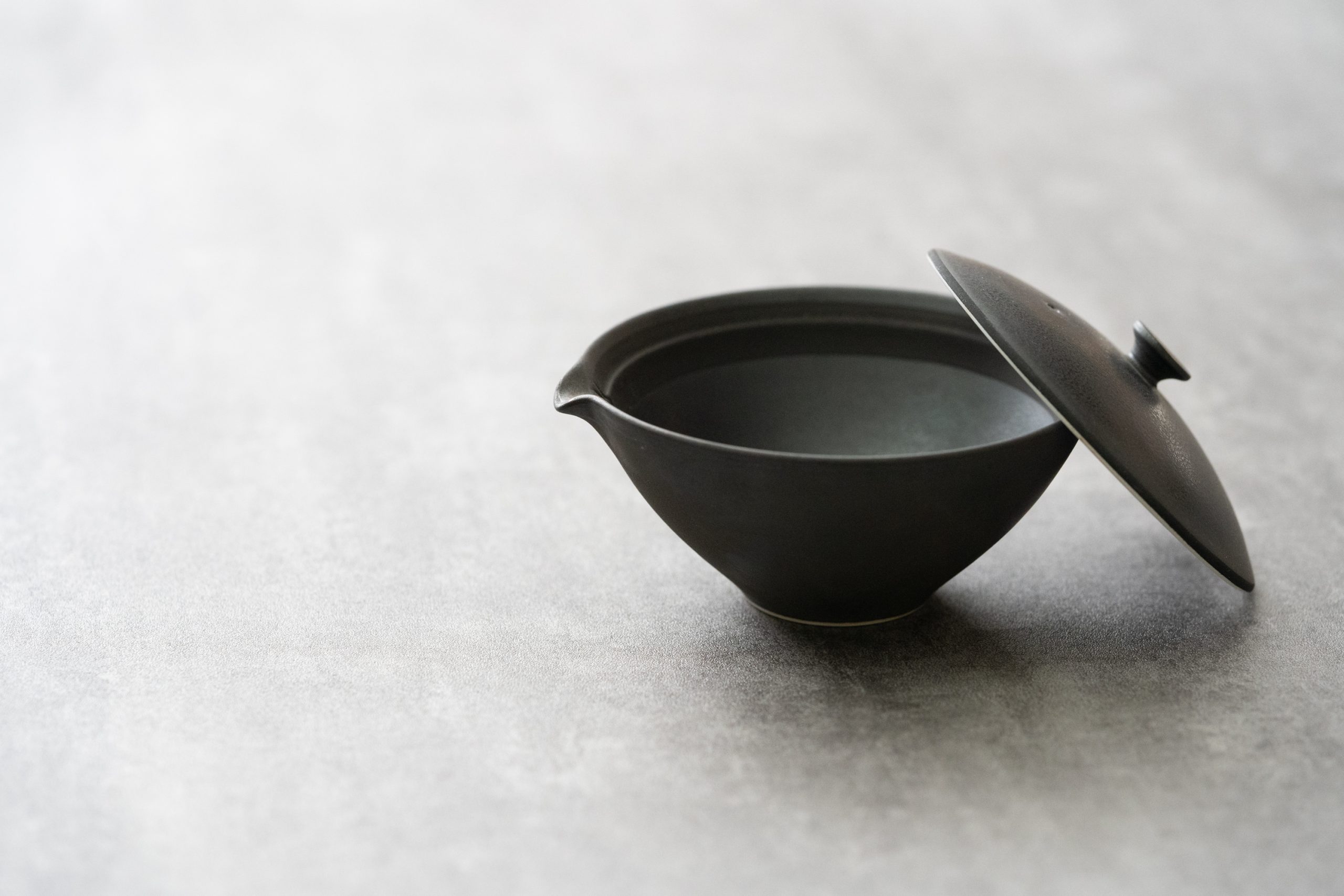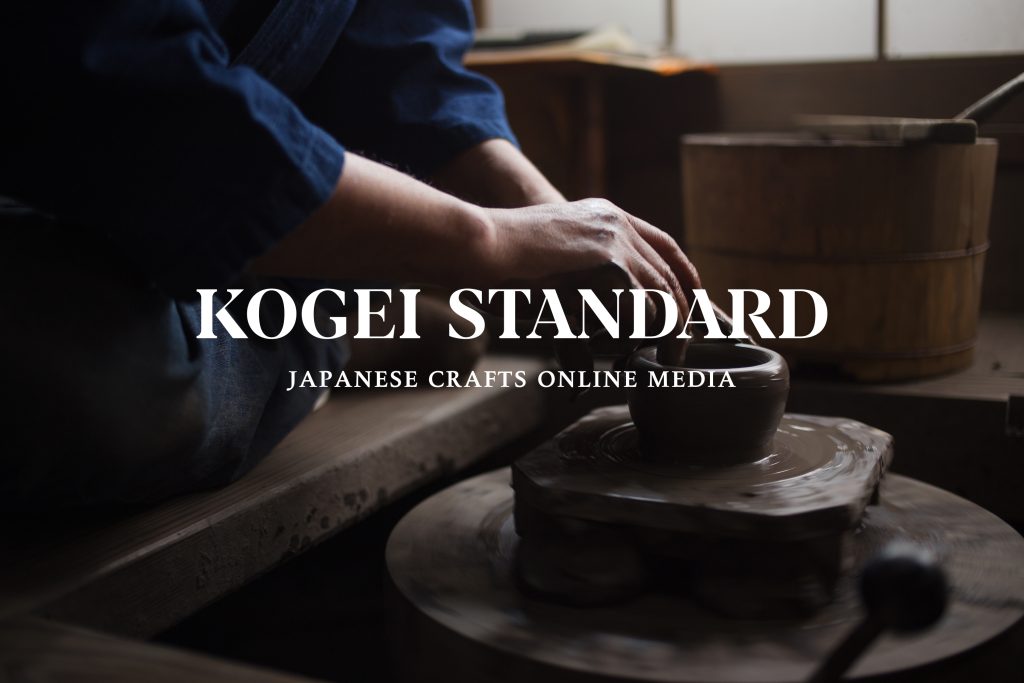Gazing at the tea leaves, gently lifting the lid of the “hohin” handle-less teapot and closing it again. Wrapping the closed teapot with one hand, slowly pouring the tea into the cup.
I like this series of movements. This is one of the things I noticed when I first encountered the hohin handle-less teapot. At the opening event of the Tokyo HULS Gallery, I had the opportunity to see Mr. Sakurai, the owner of Sakurai Japanese Tea Experience, brew a pot of tea using a hohin, and my eyes were completely riveted by the beautiful gestures of this master of the tea ceremony. I myself am not a person who has beautiful posture and manners in my daily life, but when I brew tea, I feel the need to stand up straight, remembering the gestures of Mr. Sakurai.
Crafts are beautiful everyday tools, and their “beauty” includes the manner in which they are used. The way a lid is opened and closed, the way a bowl is held, the way a textile is folded; each of these actions possesses its own unique beauty. No matter how exquisite a piece may be, if it is handled roughly its beauty will be ruined. The shape of the object varies slightly, of course, as does the way it touches the ceramics, lacquerware, glass, and other materials, and this difference is another part of what makes crafts so interesting. Sake ware comes in a variety of shapes and materials. Some sake cups are best held in one hand, while others should be held carefully with both hands. There is a way to hold the sake cup that is appropriate for the object and the occasion, and when one becomes mindful of this, one’s daily life becomes more profound.
To make one’s movements beautiful, one must also remain fully aware of one’s breathing. I like the phrase “deep breathing,” and it is one of the practices I always keep in a corner of my mind. Whenever I feel restless or stuck in my work, unable to think clearly, I get out of my chair, step outside, and take a deep breath. By taking in a deep breath of air, I feel as if oxygen is being spread to every corner of my body. When I make a pot of tea, I do nothing for a few minutes, calm my breathing, and watch the tea leaves open. By doing so, my mind gradually calms down. Calmness of mind is also essential for the beginning of a beautiful gesture.
Our modern lives are filled with digital products that allow us to operate everything at the touch of a button. Nowadays, doors open automatically and even lights come on without the need to touch anything. In such a lifestyle, people are less likely to make small movements, and there are fewer opportunities to appreciate the gestures of others. In traditional Japanese inns, it was common to see a hostess neatly opening and closing the sliding doors and greeting guests. Even the way she brushed her fingertips against the sliding door expressed her thoughtfulness, and it is in this kind of gesture that a uniquely Japanese beauty can be found. People’s actions have always been nurtured through their relationships with objects and tools, and as our lives change, the necessary movements change with them. While this is inevitable, we would like to convey the message that it is not only the crafts themselves that have built up over time, but also the actions of people that have grown up with the use of these crafts.
Yusuke Shibata


